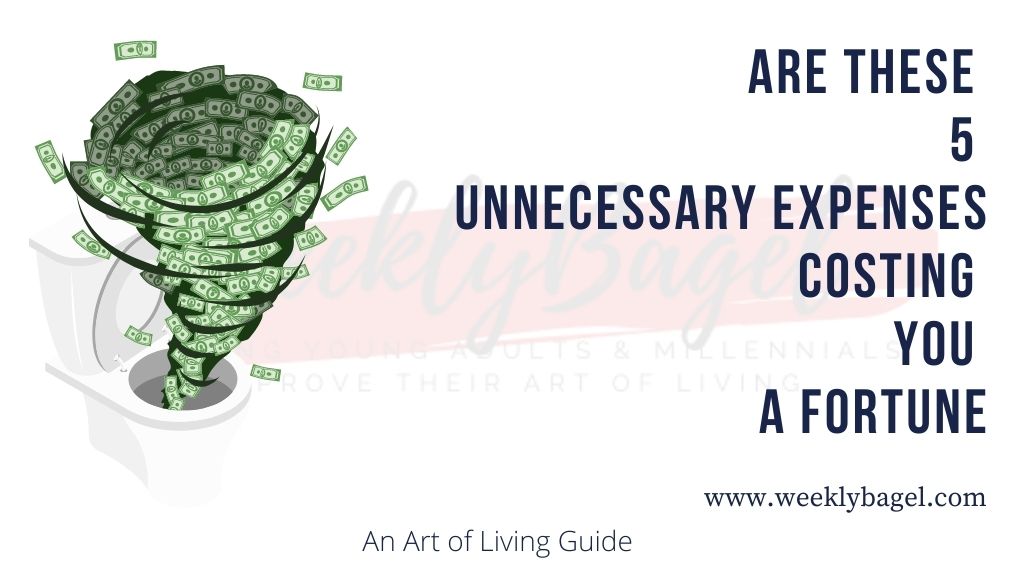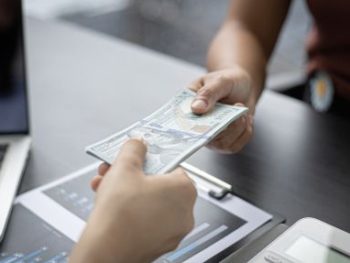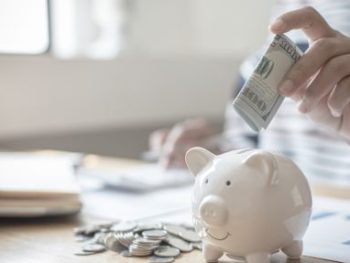
Expenses are part of our daily lives. In a society as ours with availability of varying choices, we cannot get away from spending money. Some of these expenses are unnecessary and avoidable. In fact, chances are your monthly expenses include services you barely use or need. This is power of consumerism. In the absence of a monthly budget, it is hard to keep track of where your money goes.
These include reoccurring unused subscriptions . And the most common ones- discretionary expenses too. They add up to a small fortune when left unchecked. Are the five unnecessary expenses below costing you a fortune?
1. Premium Gas Expenses Versus Regular Gas prices
According to the U.S Energy Information Administration data, the price difference of premium and regular gas in 2020 was $0.66 per gallon. This is an additional $19.8 for anyone filling up a 30 gallon car tank with premium gas. For people who filled their 30 gallon car gas tank every week of 2020, this price difference amounted to a whooping $1,029.60!
Why is this considered an unnecessary expense?
AAA Gas Price conducted a research between the two grades of gasoline. They found premium gas did not add benefits to vehicles which do not require premium gas. Unless your vehicle’s manual says to use the grade, regular gas will do just fine. I know there is a myth that premium gas has more power than regular, but that is not true.
So, why is premium gas even an option?
Well, there are some vehicles made to utilize premium gas. The efficiency of their engines require premium gas to avoid engine knock. Always refer to your car manual. If it does not require premium gas, switch to regular gas and save yourself hundreds of dollars annually. The premium expense is not necessary, since you can get the same performance using a regular gas in vehicles whose engines do not require the premium gas.
Finally, you can save a fortune annually using gas reward programs. There are gas stations, which offer discount for returning customers through their gas reward apps. Try using these to eliminate unnecessary fuel expenses.
2. Daily Cups Of Fast-Food Coffee
If you are a coffee-addict like me, you are probably not ready for any long morning conversations until after a hot cup of coffee. An Amerisleep survey of 1008 people shows the average person spends $7 to $2008 annually on caffeinated beverages. Of the age groups surveyed, millennials of the age bracket: 25 to 34 years, spent about $2008 annually on coffee. As you know, this annual cost of caffeinated beverages can be more than $2008 for a millennial who goes for special cafes and coffee ingredients.
When you look at the consequences of annual cost of fast-food coffee in ten years, $2008 quickly becomes $20,080. Regardless of what it will amount to in a decade, the annual cost alone is much. Don’t you think, dear reader?
Before I go further, let us break down the $2008 to determine how much you have to spend daily to get to that amount. This amounts to $5.50 daily. If you are a daily coffee consumer, you already know this is about two cups right there.
Now, I am not trying to discourage you from enjoying a good cup of coffee from your favorite cafe. Rather, I am trying to point out you could cut the unnecessary expenses associated with daily coffee consumption. You see, some of your favorite cafes sell coffee bags and thermos mugs in major stores. This is especially the case for well-known cafes like Starbucks.
Do you know the best part of it?
You can buy a bag of your favorite coffee blend for the price of the two cups you pay at a cafe. Usually, the bag can last for a week or more depending on usage. You can make your own coffee at home. If you like drinking coffee at work, then take it to work in a thermos mug. It saves you from spending $20,080.00 in ten years on an unnecessary expense like a fast-food coffee.
3. Forgotten and Barely-Used Monthly Subscriptions
In the United States, there are varying degrees of choices. These vast availability of these choices make life convenient. Due to their affordability, sometimes we just jumped into them without considering the long-term financial repercussion.
Listen, I am guilty of this mess too. I have a gym membership which I do not use daily. You know what I am talking about. Sometimes, we have expenses from products and services we barely use. The reason behind these decisions often lies in the affordability of the products or services. If we can afford it, we might as well get it.
After all, these services and products may increase our financial and social status among our peers. Am I right?
Well, it is better to do this with services and products we actually need. Not ones we pay monthly for, but barely use. For example, five different subscriptions to Netflix, Vudu, Hulu, Amazon Videos and HBO Max are unnecessary expenses. Although their monthly fees are about $8.99 to $14.99, they can quickly add up to a lot in a year. Besides, these online streaming services have similar movies in their movie libraries.
Apart from this, a similar monthly subscription known to litter in front of houses is printed newspapers. I am talking about the ones delivered to your front porch every morning. From the way they lie scattered and rotting on front porches or streets, people barely have the time to read these papers. But, they subscribed to having it delivered every morning. According to Nieman Lab, these newspapers subscriptions can run up to $510 annually. This is an expense you can save annually.
4. Gym Membership Expenses
Gym memberships cost a lot of money. RunRepeat puts the average monthly cost at $37.71 for this year. This average cost depends on membership and gym types. Whatever you pay for a gym membership, the cost is considered an unnecessary expense when you do not utilize the membership. This is especially for gym contracts which require you to pay monthly over a certain period of time, regardless of you coming in or not.
As a result, the cost of an unused or forgotten gym membership can run in the range of $159 to $948 annually. As mentioned earlier, this cost depends on the type of gym and membership you subscribe to. If you know you barely have the time to hit the gym, you can avoid these unnecessary expenses. There are cheaper alternative to a good health. A change in your diet and a weekly walk in the park can provide the same health benefits you seek from the gym.
If you are like me who goes to the gym a few times a month, you can stick with cheap gym membership. There are some basic gym memberships that cost about $10 monthly. When you are not hitting the gym all the time, you can stick with this kind of expenses. Since it is affordable, it will not cost you a lot of money annually.
5. Credit Card Expenses
Besides interest charge on purchases, there are expenses associated with having a credit card. This includes interest charge on promotional balances and annual fees. Prior to getting a debit card, be aware of these attached expenses. If not, these expenses will eat through your monthly budget.
To learn more about these fees, a post – 6 Important Research Before Getting A Credit Card , elaborates on these unnecessary expenses. Prior to a credit card application, it is important you know what you are getting into. This is because additional credit card expenses can be avoided.
To sum it all up, there are some expenses which are not avoidable. An example of this expense is our living expenses. However, there are many unnecessary expenses we are not paying attention to. These are what eat into our budget and savings. If we could track unnecessary monthly expenses, we will definitely save a lot of money annually.




 When You Should Finance A Purchase: 5 Best Times
When You Should Finance A Purchase: 5 Best Times